Influence of Fractal Disc Filter Flow Channel Parameters on Filtration Performance
Abstract
:1. Introduction
2. Materials and Methods
2.1. The Number and Position of Buffer Slot
2.2. The Tilt Angle
2.3. The Cross Section Shape
2.4. The Taper
2.5. The BP Neural Network Model
3. Results and Discussion
3.1. Influence of Single Flow Passage Parameter on Filtration Performance
3.1.1. The Number and Position of Buffer Slot
3.1.2. The Tilt Angle
3.1.3. The Cross Section Shape
3.1.4. The Taper
3.2. Influence of Various Flow Passage Parameters on Filtration Performance
4. Conclusions
- (1)
- At present, the popularization of micro-irrigation technology in China has broad prospects. The application of disc filters promotes the optimization of micro-irrigation filtration system selection, and backwashing disc filters can greatly improve the efficiency of micro-irrigation systems and save costs. Therefore, continuously strengthening the research and development of disc filters and structural optimization, reducing head loss and energy consumption, integrating intelligent irrigation technology, and building a system that adapts to various irrigation conditions can promote the vigorous development of micro-irrigation technology in China.
- (2)
- The application of fractal theory in disc filters has not only achieved remarkable results in improving the performance of disc filters but has also provided ideas for structural optimization of other components in micro-irrigation systems. The fractal disc filter, based on the fractal theory of the internal flow channel design, has a higher and more stable efficiency compared with the DC channel disc filter. It is not easy to block for a short time, which increases the working time of the filter and effectively reduces the local head loss in the filtration process.
- (3)
- The simulation result of the head loss of the time-shaped disc filter without buffer slot is 3 m, and the head loss of the filter varies from 2.30 m to 2.5 m after the buffer slot is added. When the buffer slot is located in a 1–1′ section, the filtration performance is better. The larger the inclination angle of the laminated flow passage, the more cross points there are between the upper and lower flow passages, the greater the flow capacity, and the better the filtration performance when the inclination angle of the laminated flow passage is 35°. The smaller the total area of flow passage at the outlet of the filter element, the greater the head loss. The taper has a significant influence on the head loss of the disc filter. The filter performance is better when the base edge of the laminated flow passage section is 0.56 mm and the height is 0.20 mm. The larger the taper value is, the smaller the head loss is, and the filter performance is better when the flow passage taper is 0.0080. Among them, the lamination taper has the greatest influence on the filter performance.
- (4)
- Combined with the prediction results of the BP Neural Network model, the optimal values of multiple flow channel parameter performance in the fractal disc filter are as follows: The buffer slot is located at 1–2′ of the cross section; the flow passage inclination is 25°; the length of the bottom side of the inner section is 0.36 mm; the height is 0.24 mm; and the taper is 0.0080. Combined with the third conclusion, it is shown that the results of superior performance of multiple flow passage parameters are not completely consistent with the results of superior performance of single flow passage parameters, but the values of the most influential taper are consistent.
Author Contributions
Funding
Institutional Review Board Statement
Informed Consent Statement
Data Availability Statement
Conflicts of Interest
References
- De, S.; Zhou, Y.; Larizgoitia Abad, I.; Moessner, K. Cyber–Physical–Social Frameworks for Urban Big Data Systems: A Survey. Appl. Sci. 2017, 7, 1017. [Google Scholar] [CrossRef]
- CAAS. Notice of the first National Intelligent Irrigation Forum. J. Irrig. Drain. 2022, 41, 1. [Google Scholar]
- Amiri, N.; Nakhaei, M. Evaluating the Potential of Treated Municipal Wastewater Reuse in Irrigation and Groundwater Recharge; 5-year Contaminant Transport Modeling. Int. J. Environ. Sci. Technol. 2024, 21, 577–602. [Google Scholar] [CrossRef]
- Hüllmann, J.A.; Precht, H.; Carolin, W. Configurations of Human-AI Work in Agriculture; German Informatics Society: Bonn, Germany, 2023. [Google Scholar]
- Zhao, J.C.; Zhang, J.F.; Feng, Y.; Guo, J.X. The Study and Application of the IOT Technology in Agriculture. In Proceedings of the 2010 3rd International Conference on Computer Science and Information Technology, Chengdu, China, 9–11 July 2010. [Google Scholar]
- Xiao, X.; Dong, W.; Yang, J.; Luo, J. Experimental Study on Characteristics of Laminated Sand Filter for Micro-Irrigation. Trans. Chin. Soc. Agric. Eng. 2005, 21, 81–84. [Google Scholar]
- Xiao, X.; Xu, J. Repeated Nets filter. J. N. China Inst. Aerosp. Ind. 2006, 16, 1–2. [Google Scholar]
- Wang, J.; Cui, C.; Cui, R. A Test on the Hydraulic Performance of Self-developed Piston Driven Monomer Disc Filter. Heilongjiang Hydraul. Sci. Technol. 2016, 44, 4–6. [Google Scholar]
- Zhang, J. Design and Analysis of Sediment Separation System with High Sediment Content Water. Water Sav. Irrig. 2015, 5, 88–91. [Google Scholar]
- Hou, J.X.; Zhang, Y.C. Study on Filtration Performance of Rotary Disc Filter with Different Filter Discs. Adv. Mater. Res. 2013, 610–613, 1265–1269. [Google Scholar] [CrossRef]
- Li, N.; Zhai, G.; Zhang, W.; Cai, J. Filtration Performance of Disc Filters for Microirrigation. J. Irrig. Drain. 2016, 35, 52–56. [Google Scholar]
- Wu, W.Y.; Huang, Y.; Liu, H.L.; Yin, S.Y.; Niu, Y. Reclaimed Water Filtration Efficiency and Drip Irrigation Emitter Performance with Different Combinations of Sand and Disc Filters. Irrig. Drain. 2015, 64, 362–369. [Google Scholar]
- Cui, R.; Cui, C.; Sheng, X.; Lei, J.; Chen, Z. Research of Lamination Head Loss for two Different Types of Channel Structure. J. Water Resour. Water Eng. 2019, 30, 257–260. [Google Scholar]
- Khan, T.A.; Rehman, A.U.; Jamal, M.N. To Investigate the Performance of Disc Filter in Retaining Clay and Sand Particles. Int. J. Sci. Eng. Appl. Sci. 2017, 3, 87–92. [Google Scholar]
- Mandelbrot, B.B. The Fractal Geometry of Nature. Am. J. Phys. 1983, 51, 286. [Google Scholar] [CrossRef]
- Feng, J. Step Regulation Mechanism and Method of Sediment in Drip Irrigation System with the Yellow River Water. Ph.D. Thesis, China Agricultural University, Beijing, China, 2017. [Google Scholar]
- Chen, W. Research on the Flow and Heat Transfer Performance of a Fractal Wick Structure Based on the Y-Shaped Unit. Master’s Thesis, South China University of Technology, Guangzhou, China, 2015. [Google Scholar]
- Li, Y. Design of Fractal Flow Path for Emitters and Experiment Study and Modeling on Its Fluid Mechanism. Ph.D. Thesis, China Agricultural University, Beijing, China, 2005. [Google Scholar]
- Tang, Y. Preliminary Study on a New Theory of Turbulence: Fractal DDC and General Physics Equations. Ph.D. Thesis, Hohai University, Nanjing, China, 1993. [Google Scholar]
- Zhang, C. Study on Flow Characteristics of Laminated Filter and Design and Verification of Fractal Flow Channel. Master’s Thesis, China Agricultural University, Beijing, China, 2016. [Google Scholar]
- Ma, Z.X. Research of the Flow Path in the Laminated Filter and Product Development with Fractal Curve. Master’s Thesis, China Agricultural University, Beijing, China, 2018. [Google Scholar]
- Chi, Y.; Yang, P.; Ma, Z.; Wang, H.; Liu, Y.; Jiang, B.; Hu, Z. The Study on Internal Flow Characteristics of Disc Filter under Different Working Condition. Appl. Sci. 2021, 11, 7715. [Google Scholar] [CrossRef]
- Yang, P.L.; Lu, P.; Ren, S.M.; Wang, X.; Liu, W. Comprehensive Evaluation Method for Hydraulic Performance and Filtering Quality of Laminated Filter. Trans. Chin. Soc. Agric. Eng. 2019, 35, 134–141. [Google Scholar]
- Yang, P.; Lu, P.; Ren, S.; Wang, X. Experiment on Performance of Disc Filter Based on Fractal Theory. Trans. Chin. Soc. Agric. Mach. 2019, 50, 218–226. [Google Scholar]
- Jiang, G.; Luo, M.; Bai, K.; Chen, S. A Precise Positioning Method for a Puncture Robot Based on a PSO-Optimized BP Neural Network Algorithm. Appl. Sci. 2017, 7, 969. [Google Scholar] [CrossRef]
- Cai, K.; Wang, Y.; Lu, S. Research on Optimization Design of Injection Mold for Automobile Filter Shell Model Based on BP Neural Network. IOP Conf. Ser. Mater. Sci. Eng. 2019, 612, 032014. [Google Scholar] [CrossRef]
- Kazarian, A.G.; Teslyuk, V.M.; Kazymyra, I.Y. Selection of the Optimal Structure of Hidden Layers of the Artificial Neural Network for Energy Efficiency Analysis. Ukr. J. Inf. Technol. 2021, 3, 30–36. [Google Scholar] [CrossRef]
- Liu, X.; Wu, Y. The Computation of the Lateral Jet Turbulence Flow Using DES Method. Acta AERO et Astro. Sinica. 2004, 25, 209–213. [Google Scholar]
- Wang, J.; Zhao, Z.; Liu, Y.; Guo, Y. Research on the Role of Influencing Factors on Hotel Customer Satisfaction Based on BP Neural Network and Text Mining. Information 2021, 12, 99. [Google Scholar] [CrossRef]
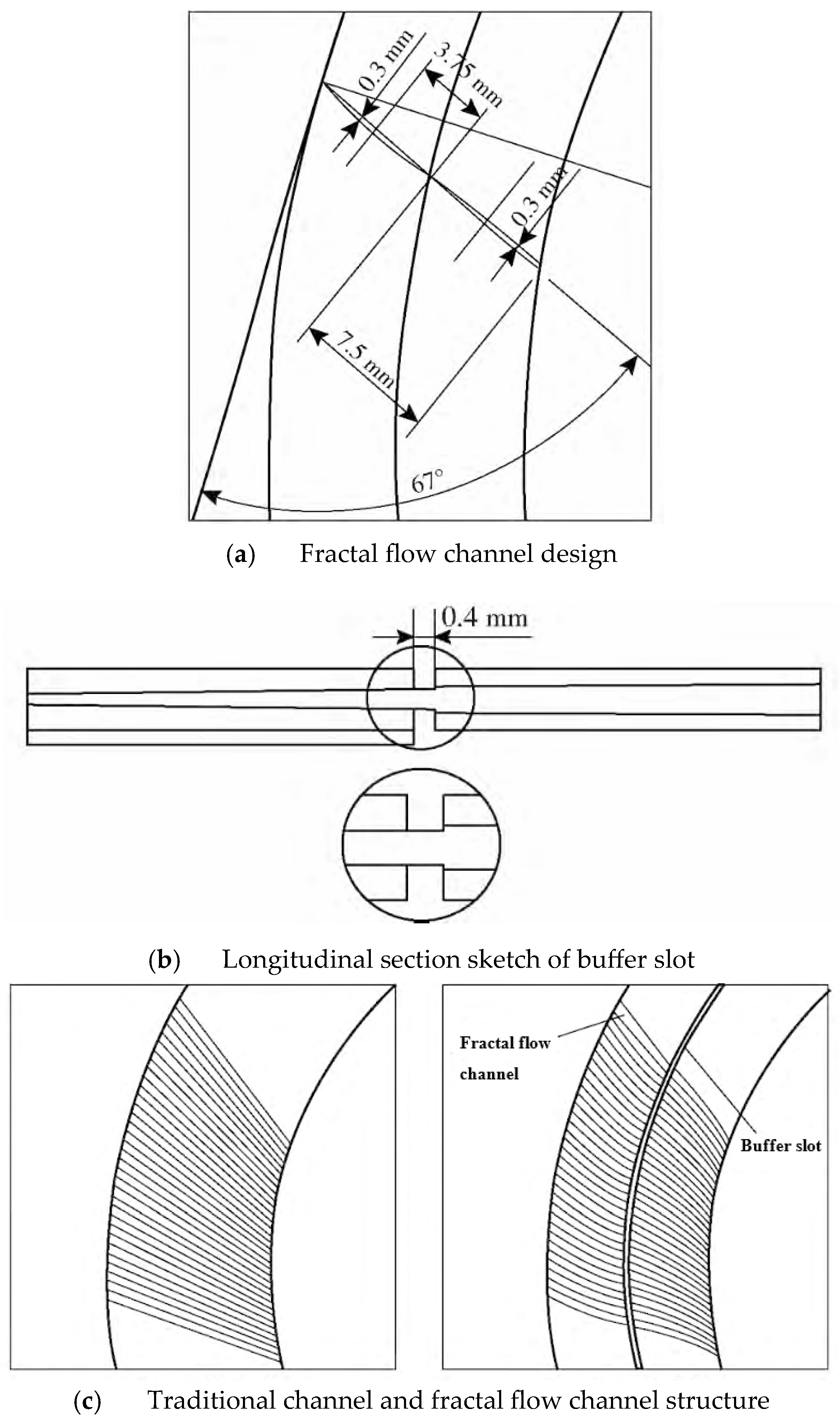
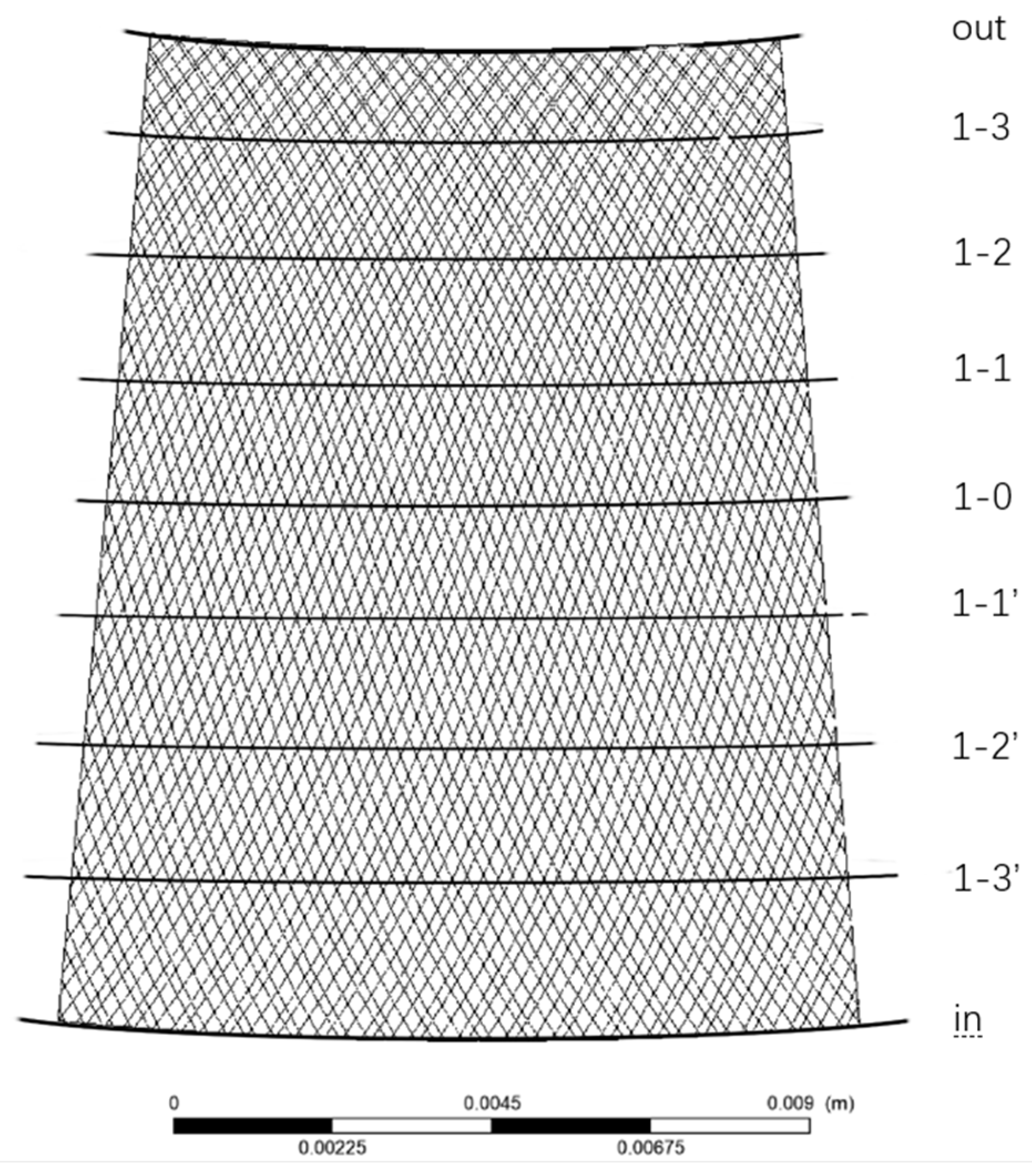
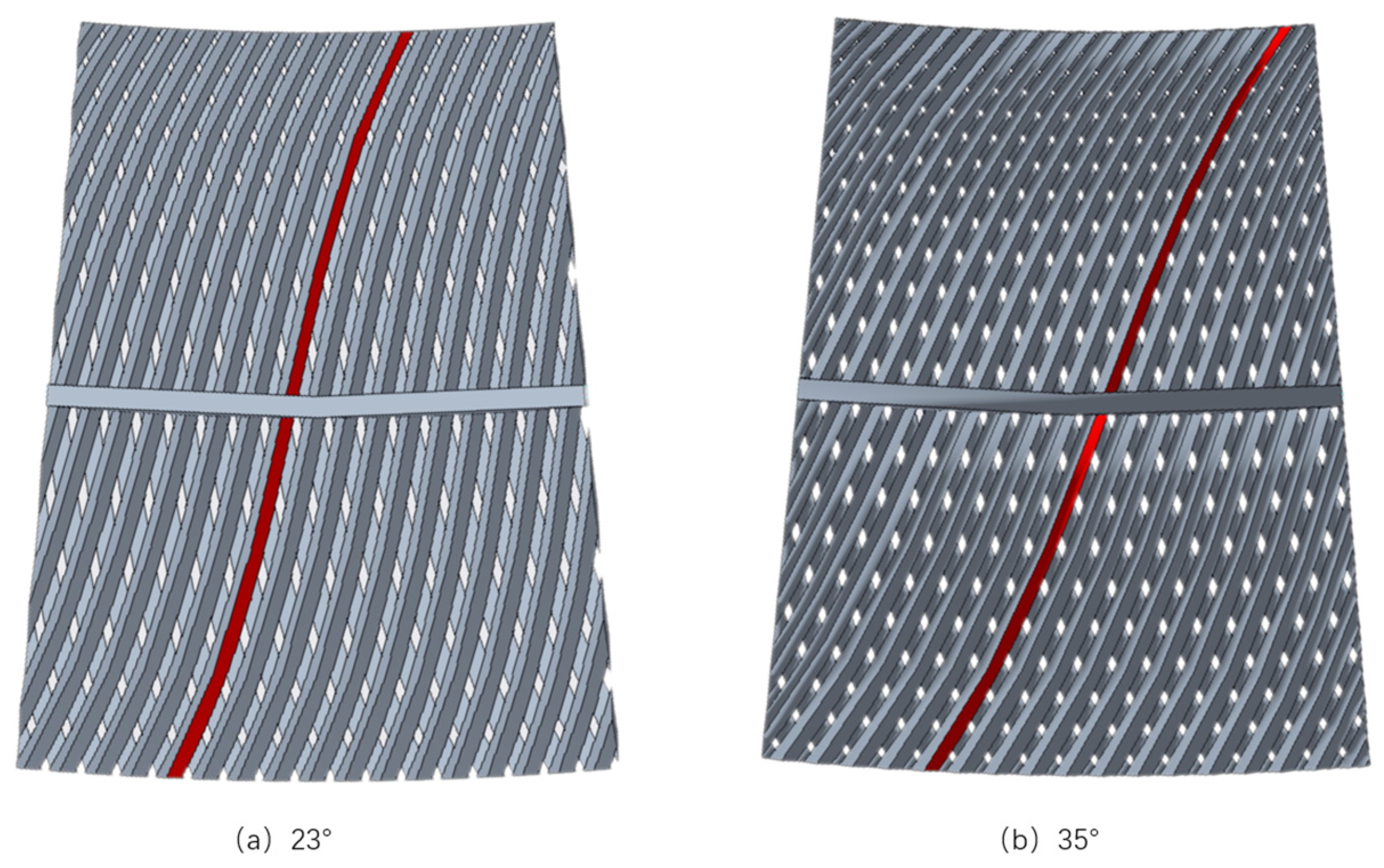
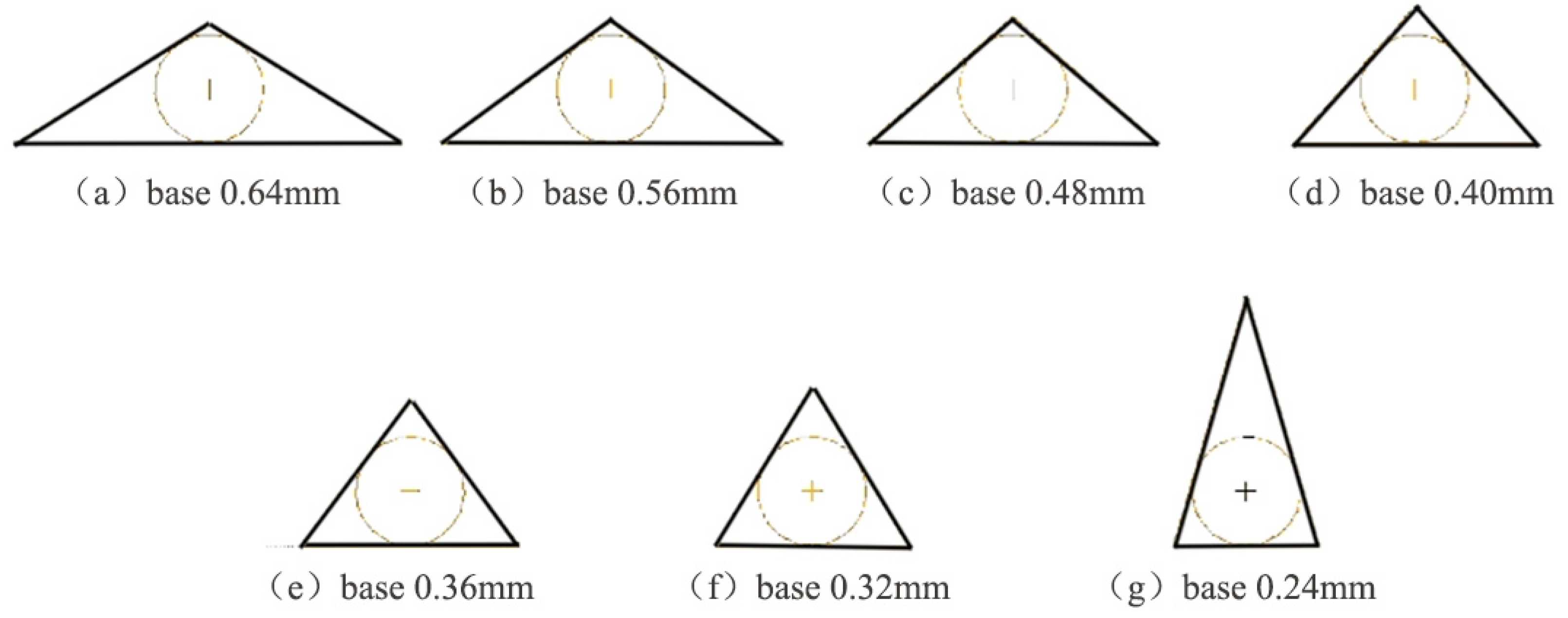

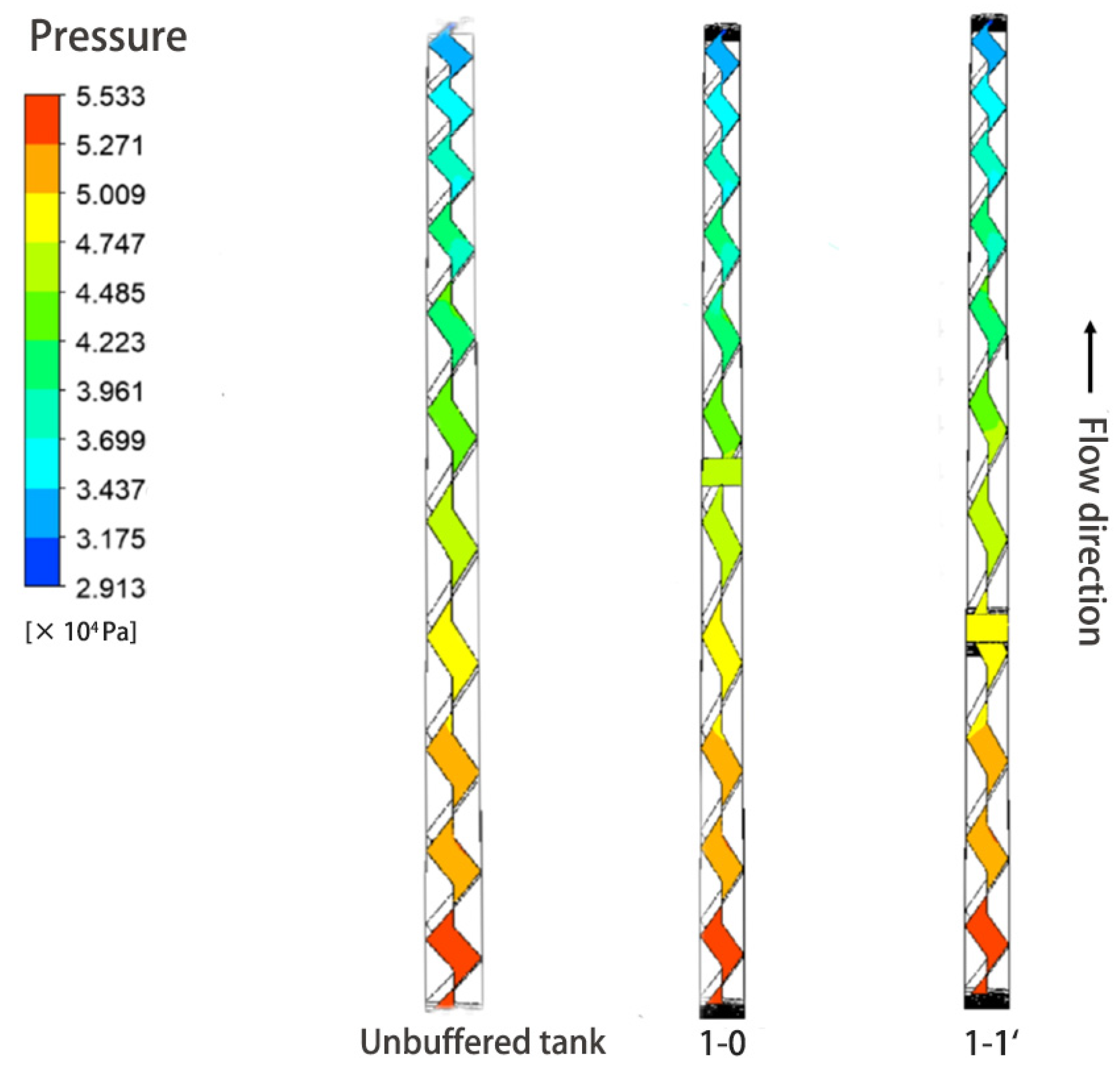
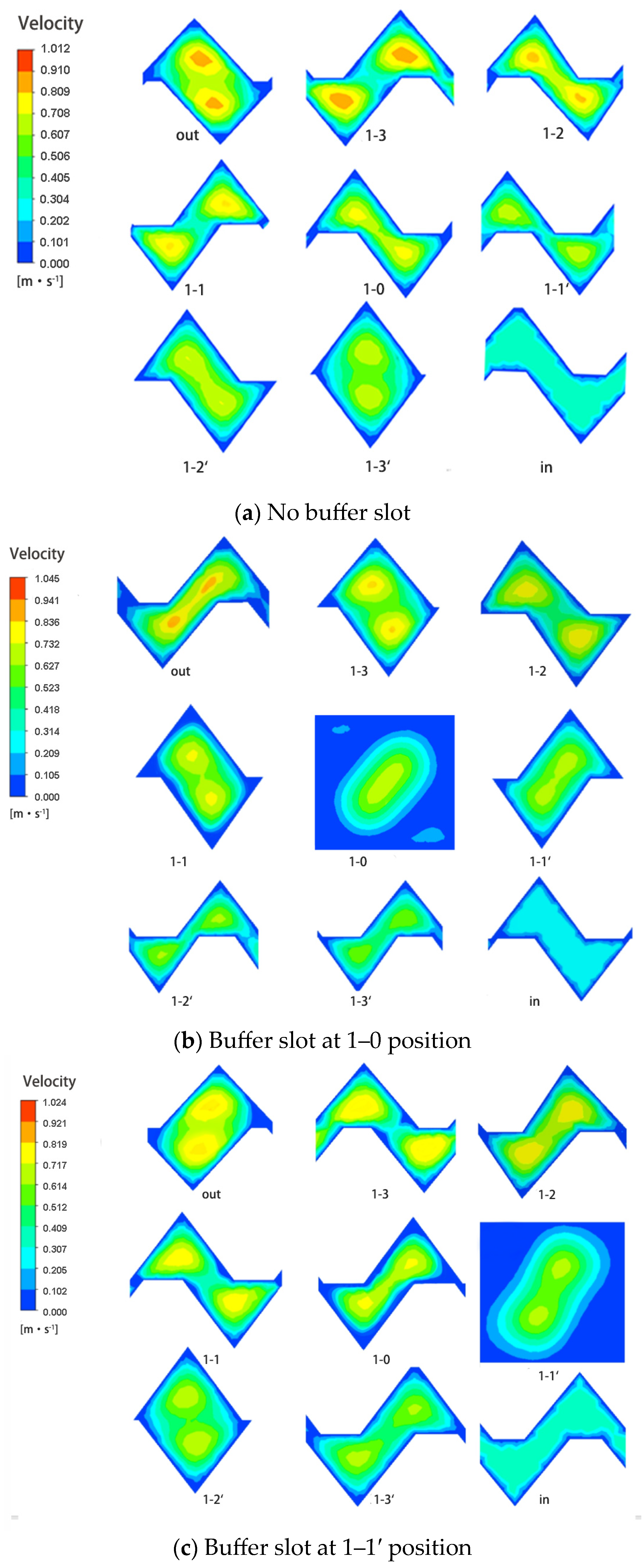
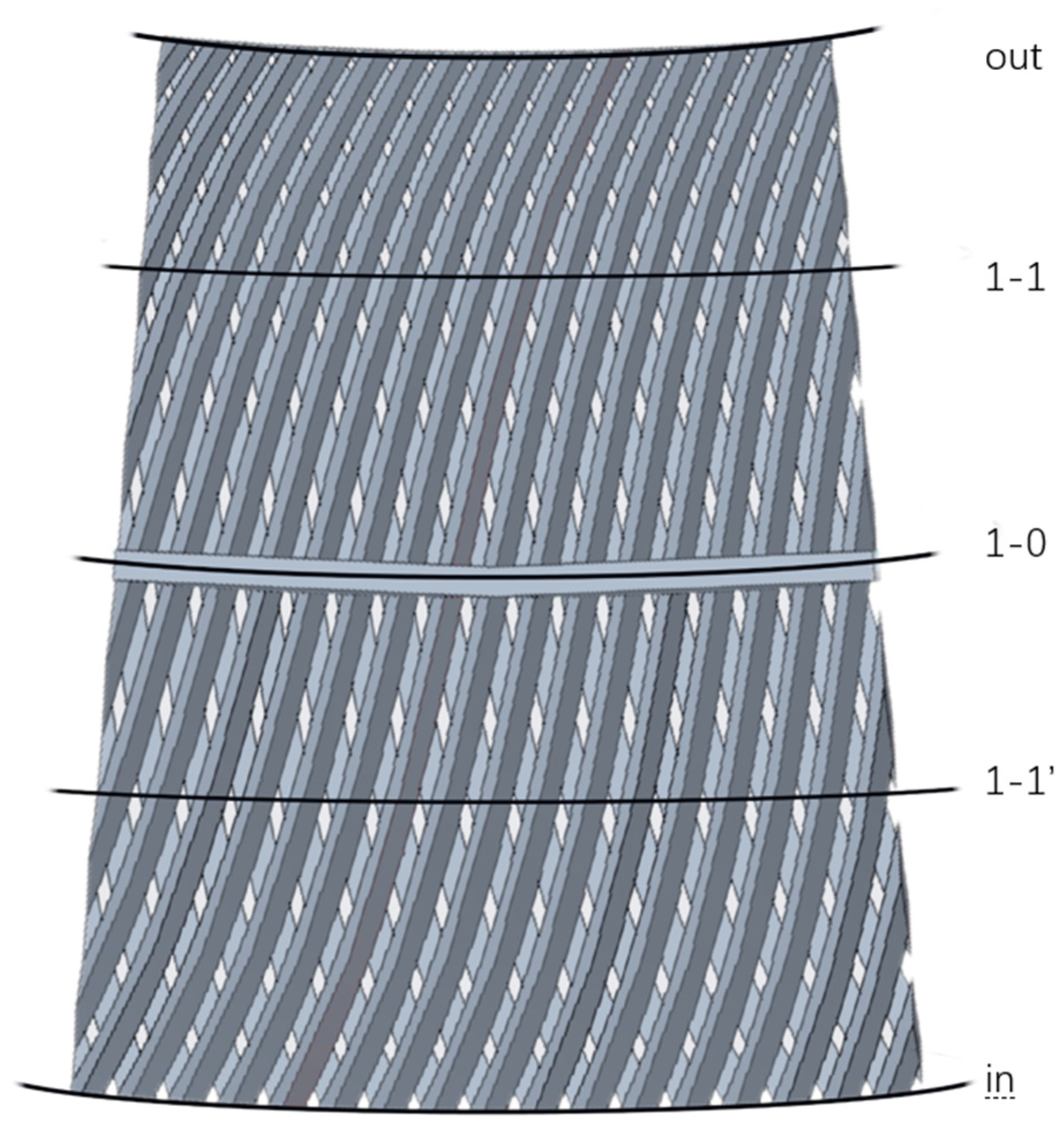
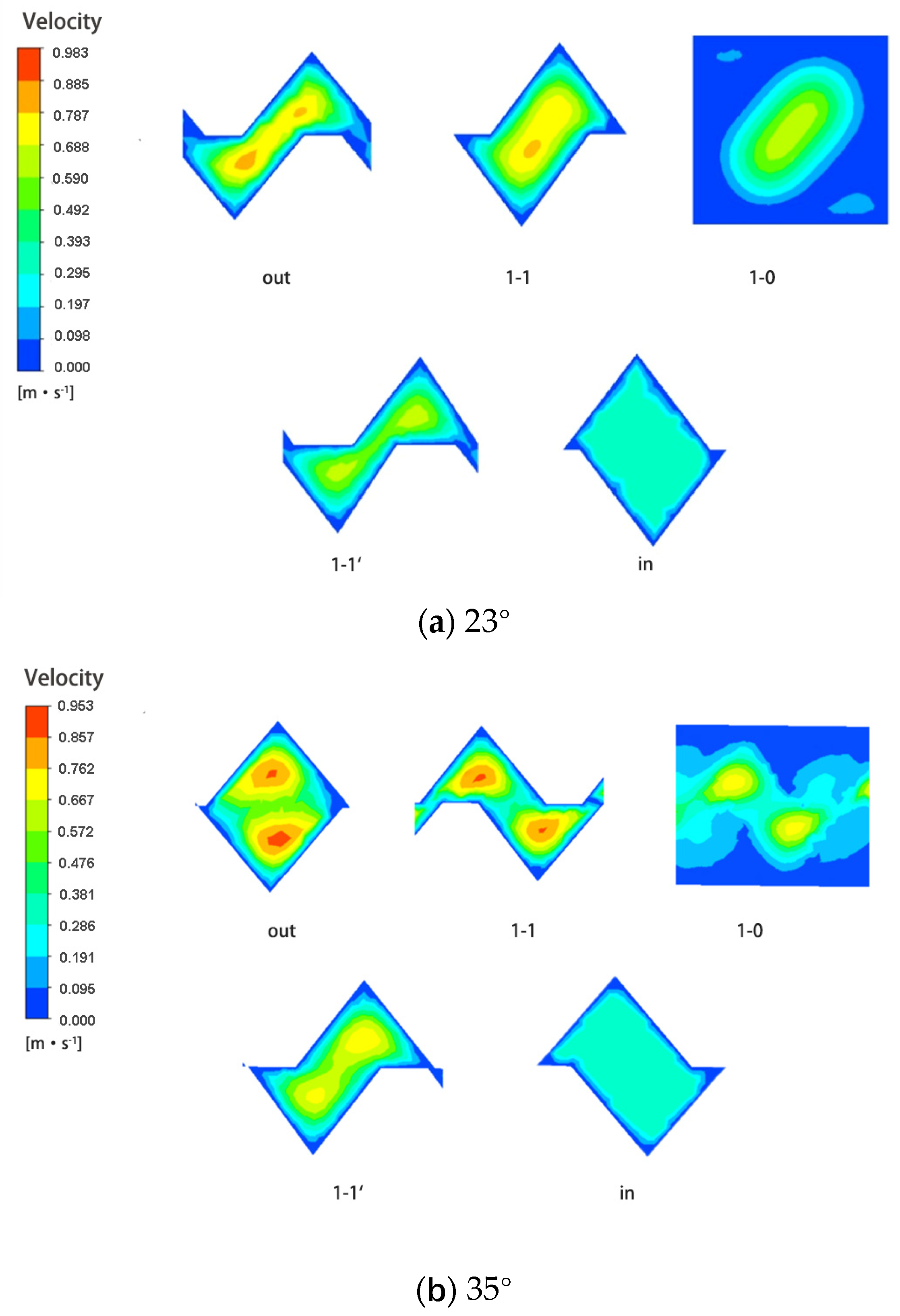
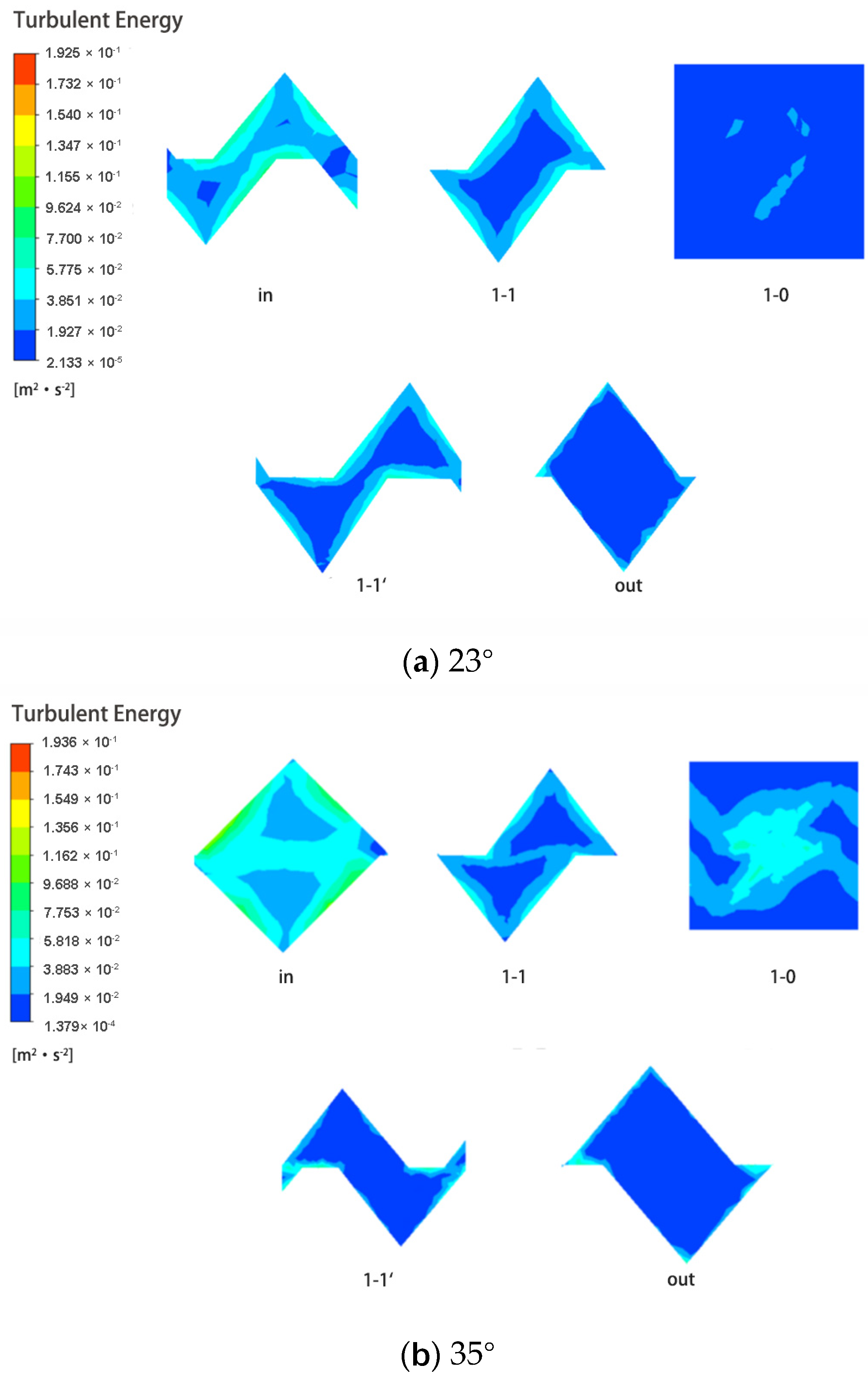

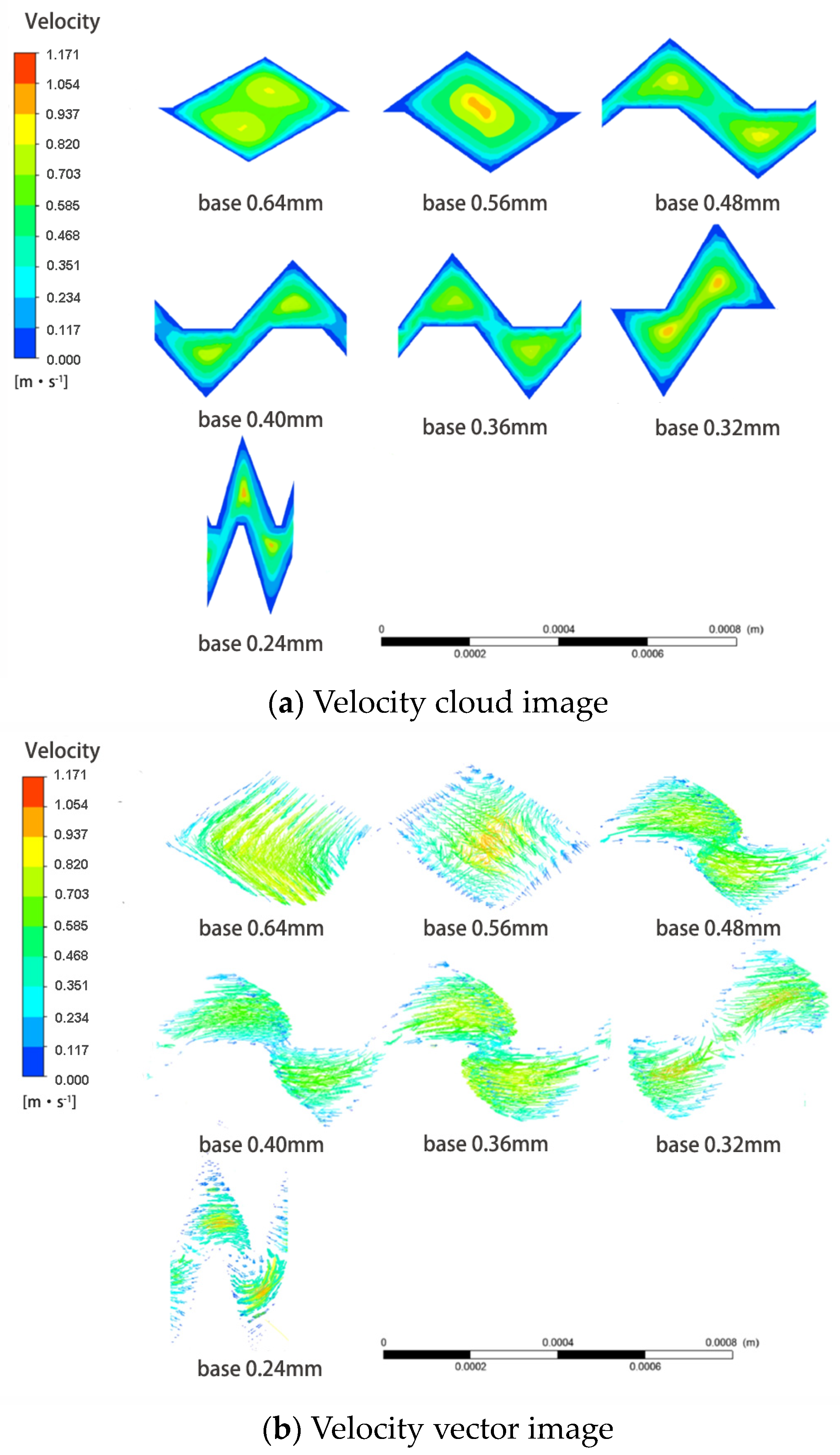
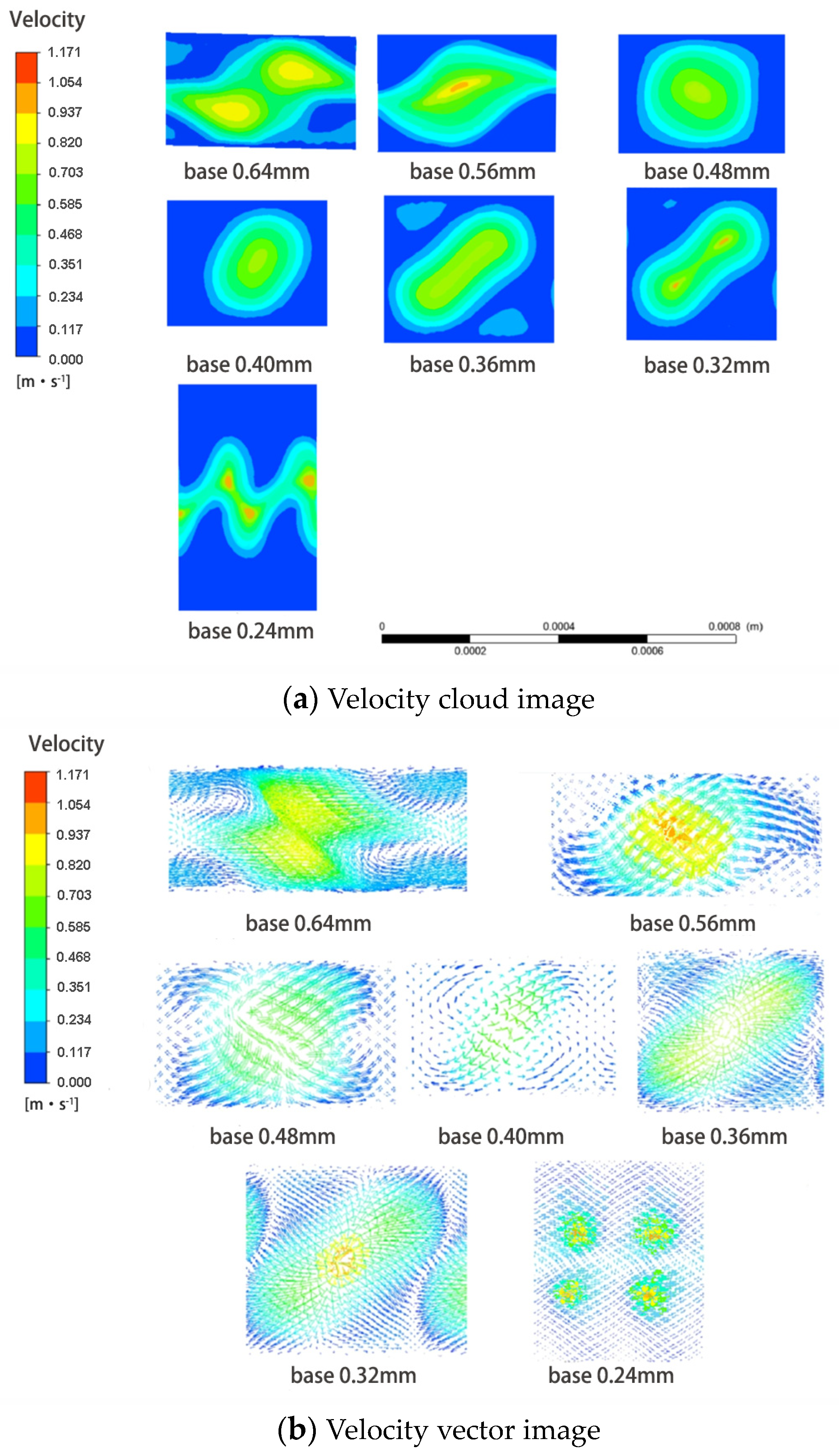
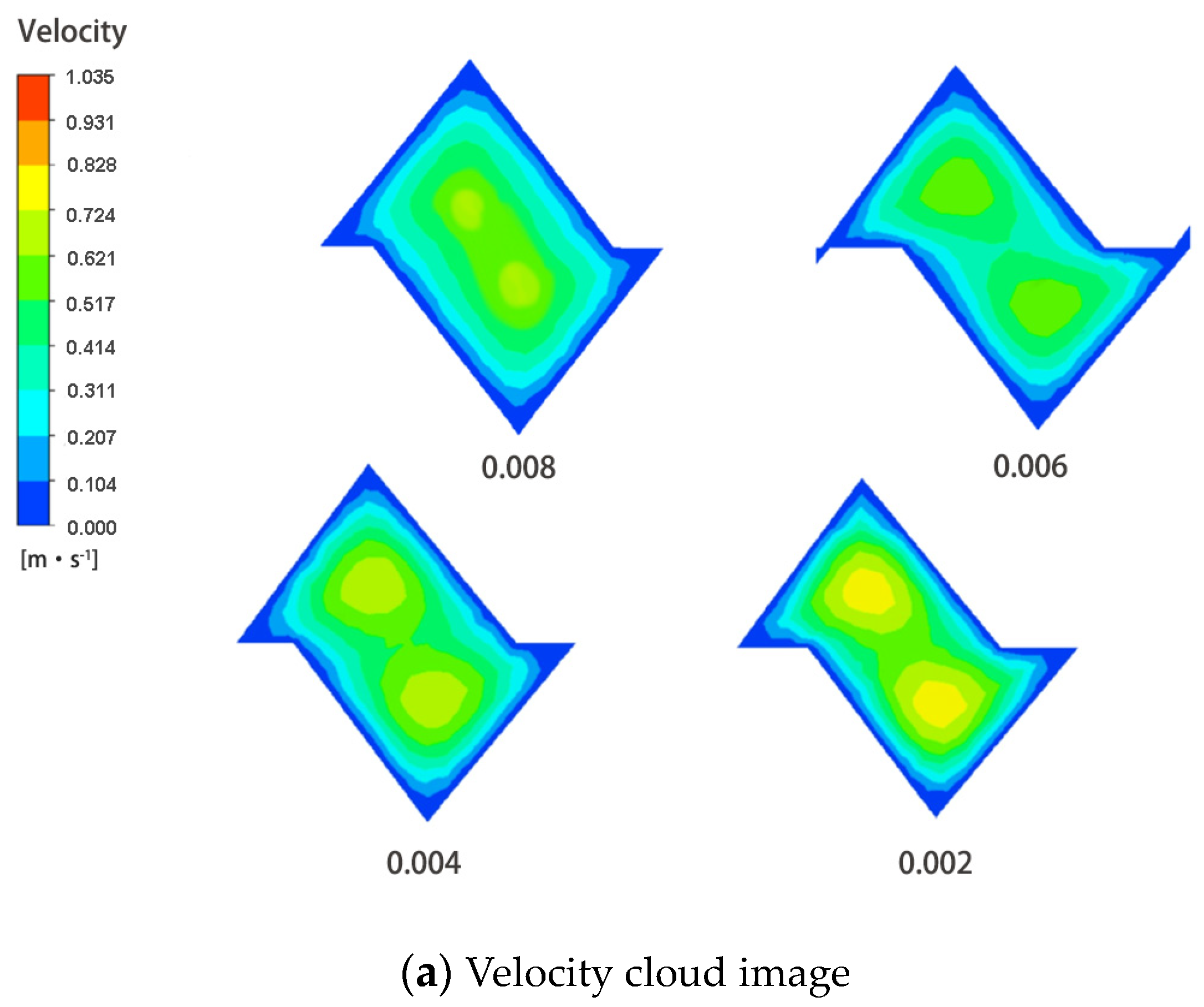

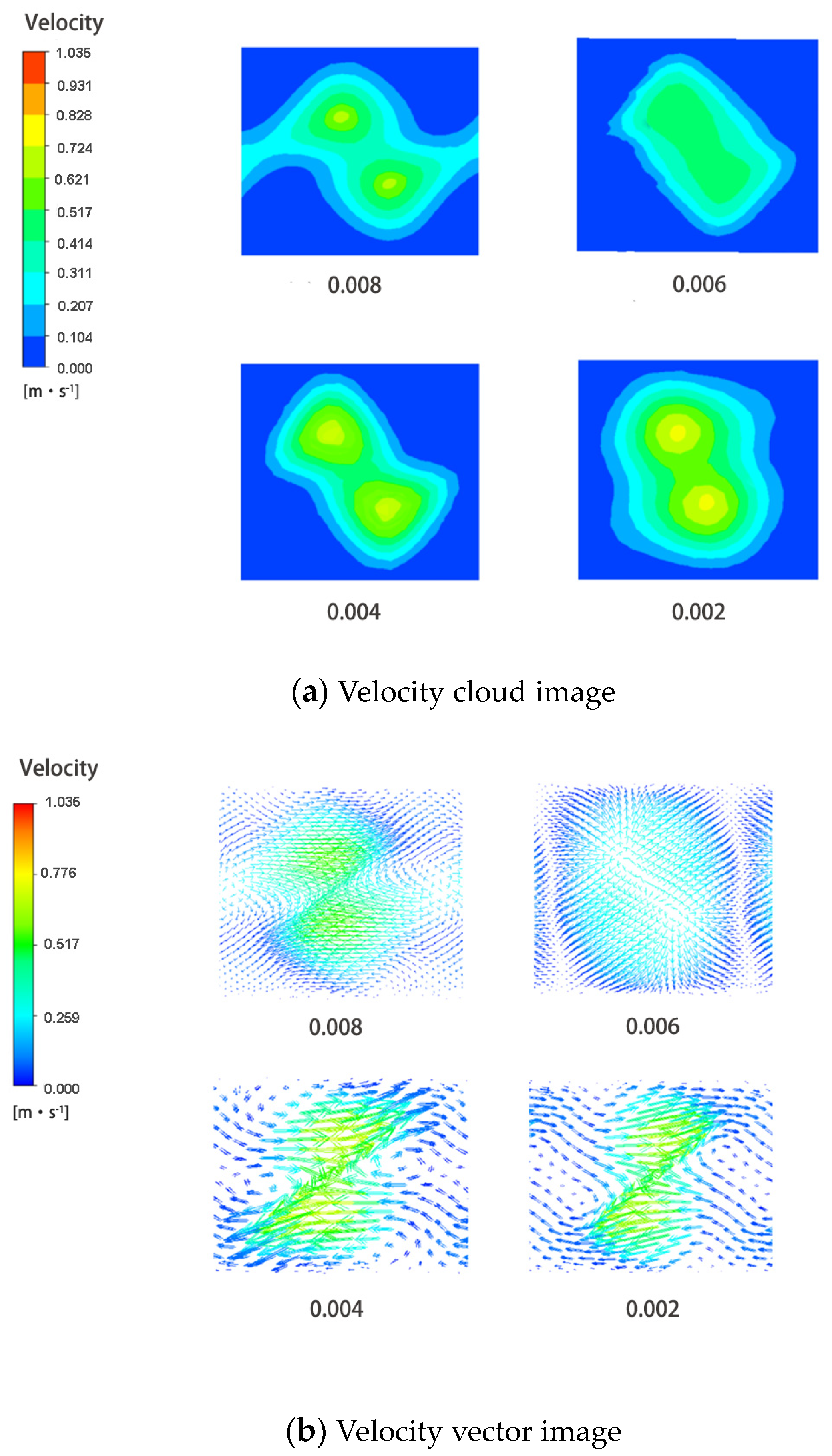

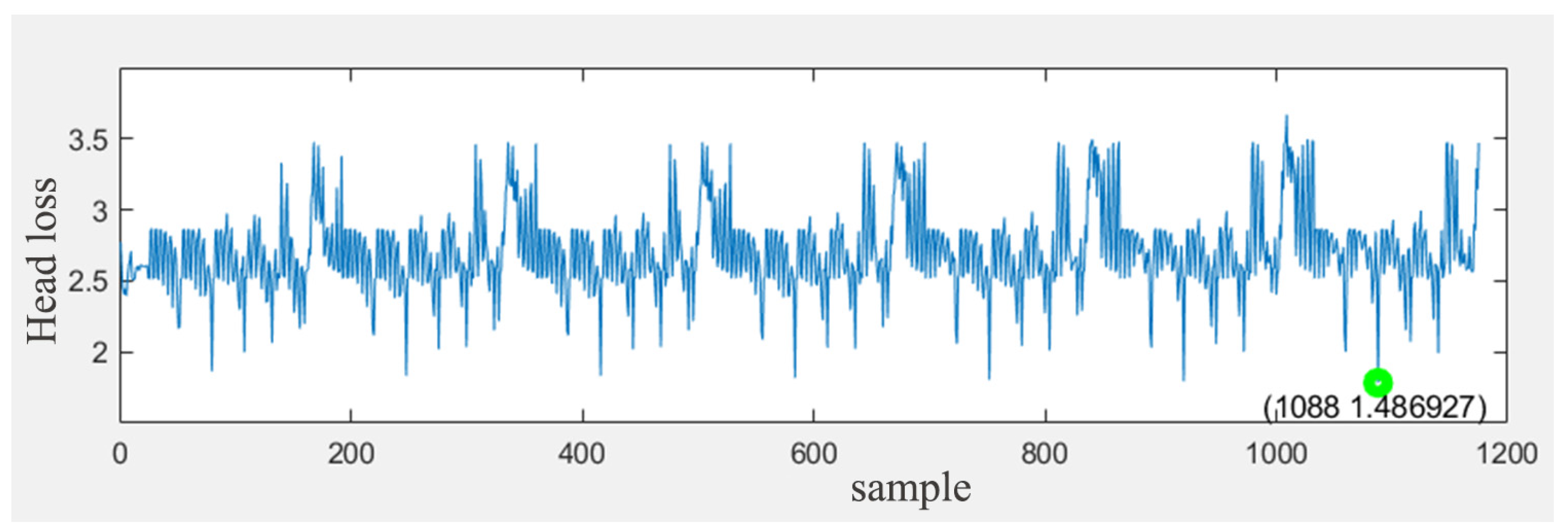
| External Section (mm) | Internal Section (mm) | 1–1′ Section (mm2) | |||
|---|---|---|---|---|---|
| External Base | External Height | Internal Base | Internal, Height | Area of Single Section | Area of the Whole Filter Element |
| 0.86 | 0.26 | 0.64 | 0.20 | 0.076 | 20,659.33 |
| 0.74 | 0.27 | 0.56 | 0.20 | 0.067 | 19,425.07 |
| 0.62 | 0.28 | 0.48 | 0.21 | 0.060 | 20,055.80 |
| 0.54 | 0.30 | 0.40 | 0.23 | 0.055 | 20,558.50 |
| 0.44 | 0.32 | 0.36 | 0.24 | 0.050 | 19,619.86 |
| 0.42 | 0.35 | 0.32 | 0.26 | 0.050 | 19,926.86 |
| 0.32 | 0.55 | 0.24 | 0.41 | 0.059 | 19,421.28 |
| Taper | Base of External Section (mm) | Height of Internal Section (mm) |
|---|---|---|
| 0.0020 | 0.42 | 0.28 |
| 0.0040 | 0.48 | 0.32 |
| 0.0060 | 0.54 | 0.36 |
| 0.0080 | 0.60 | 0.40 |
Disclaimer/Publisher’s Note: The statements, opinions and data contained in all publications are solely those of the individual author(s) and contributor(s) and not of MDPI and/or the editor(s). MDPI and/or the editor(s) disclaim responsibility for any injury to people or property resulting from any ideas, methods, instructions or products referred to in the content. |
© 2024 by the authors. Licensee MDPI, Basel, Switzerland. This article is an open access article distributed under the terms and conditions of the Creative Commons Attribution (CC BY) license (https://creativecommons.org/licenses/by/4.0/).
Share and Cite
Zeng, J.; Yang, P.; Liu, W.; Xiang, X. Influence of Fractal Disc Filter Flow Channel Parameters on Filtration Performance. Appl. Sci. 2024, 14, 7505. https://doi.org/10.3390/app14177505
Zeng J, Yang P, Liu W, Xiang X. Influence of Fractal Disc Filter Flow Channel Parameters on Filtration Performance. Applied Sciences. 2024; 14(17):7505. https://doi.org/10.3390/app14177505
Chicago/Turabian StyleZeng, Jiefeng, Peiling Yang, Weijie Liu, and Xudong Xiang. 2024. "Influence of Fractal Disc Filter Flow Channel Parameters on Filtration Performance" Applied Sciences 14, no. 17: 7505. https://doi.org/10.3390/app14177505






